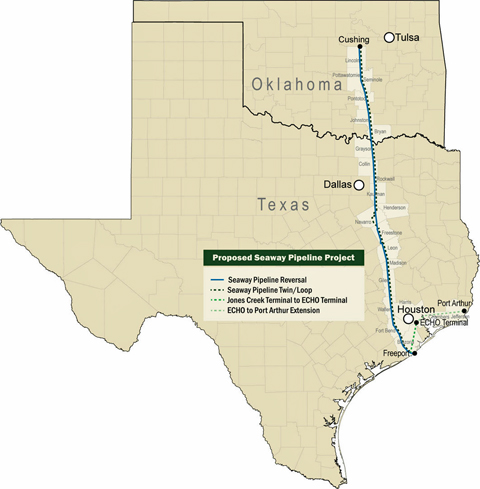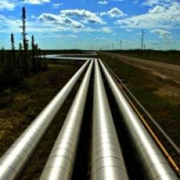Environmental Issue
By Rita Cook
How many readers have heard of the Seaway Pipeline?
Are Tarsands already flowing to the Texas Gulf Coast without the Keystone XL pipeline?.
Chris Guldi, creator of a website called Stopseawaypipeline and an advocate against the Seaway Pipeline for a number of reasons didn’t really know much about it until she attended a Clean Air Dallas Meeting in February of this year. She says she listened to a presentation about the Pipeline reversal along with what she calls “hair-raising details” about the rupture of a similar reversed and re-purposed pipeline that was owned by the same company [Enbridge]. (chris Guildi, Rita Beving
“The existing 36-year-old pipeline, recently reversed and re-purposed, will carry an especially toxic and leak-prone product, tar sand crude, that when leaked would sink to the bottom of one of DFW's reservoirs after some of its highly toxic additives dissolve in the water,” Guldi explains. ( illustation from seawaypipeline.com )

While there are many factors leading to the problems the Seaway Pipeline can create in Dallas, Guldi says she wants people to know that, like all pipelines, the Seaway Pipeline will leak. “The companies that own and operate Seaway, Enbridge and Enterprise Products Partners, have especially poor records regarding oil pipeline leaks,” she explains. “Existing pipeline regulations do not consider the particular hazards associated with this new product, tar sand crude.” Guldi says her biggest concern for Dallas is that the Seaway pipeline threatens three DFW reservoirs in 40 of its 500 miles. “The odds are there will be a leak into one of these reservoirs within 20 years,” Guldi explains. “A tar sand crude spill would kill a reservoir, instantly reducing our available water supply by 10 percent. We do not have the water to spare. This would affect not merely whether you can water your lawn, but whether an industry like the semiconductor industry, that requires a lot of water, can continue to manufacture in our area.” ( photo: Petropro.com )
Guldi says her biggest concern for Dallas is that the Seaway pipeline threatens three DFW reservoirs in 40 of its 500 miles. “The odds are there will be a leak into one of these reservoirs within 20 years,” Guldi explains. “A tar sand crude spill would kill a reservoir, instantly reducing our available water supply by 10 percent. We do not have the water to spare. This would affect not merely whether you can water your lawn, but whether an industry like the semiconductor industry, that requires a lot of water, can continue to manufacture in our area.” ( photo: Petropro.com )
Guldi says that she can’t really even say what is in the pipeline, but that Industry publications have consistently described the Seaway reversal as a way to move the glut of tar sand crude that is stored in Cushing Oklahoma to the Gulf Coast. According to her, current regulations do not distinguish between tar sand crude and other types of crude oil, which is a problem. “The pipeline companies are not currently required to publish what type of crude oil they are shipping. So we do not really know what is being shipped.”
Guldi recommends that everyone learn more about the Seaway Pipleline just like she has by calling local, state and federal representatives while at the same time reducing their own demand for oil.
“This is not a simple issue that you can be for or against,” she concludes adding that knowledge is key “The oil and pipeline companies have more money than environmentalists do to tell their side of the story, and I generally find environmentalists to be more reliable; but neither side is 100 percent right about everything. Few people have any idea how much the Dallas Metroplex in particular is under threat from tar sand pipelines so we need to know enough to challenge every claim and work out safer ways to conduct our energy industries.”
For more information about the Seaway Pipeline visit www.stopseawaypipeline.com.
Sign up for the weekly Green Source DFW Newsletter to stay up to date on everything green in North Texas, the latest news and events.
Rita Cook is an award winning journalist who writes or has written for the Dallas Morning News, Focus Daily News, Waxahachie Daily Light, Dreamscapes Travel Magazine, Porthole, Core Media, Fort Worth Star Telegram and many other publications in Los Angeles, Dallas and Chicago. With five books published, her latest release is “A Brief History of Fort Worth” published by History Press. You can contact her at rcook13@earthlink.net









